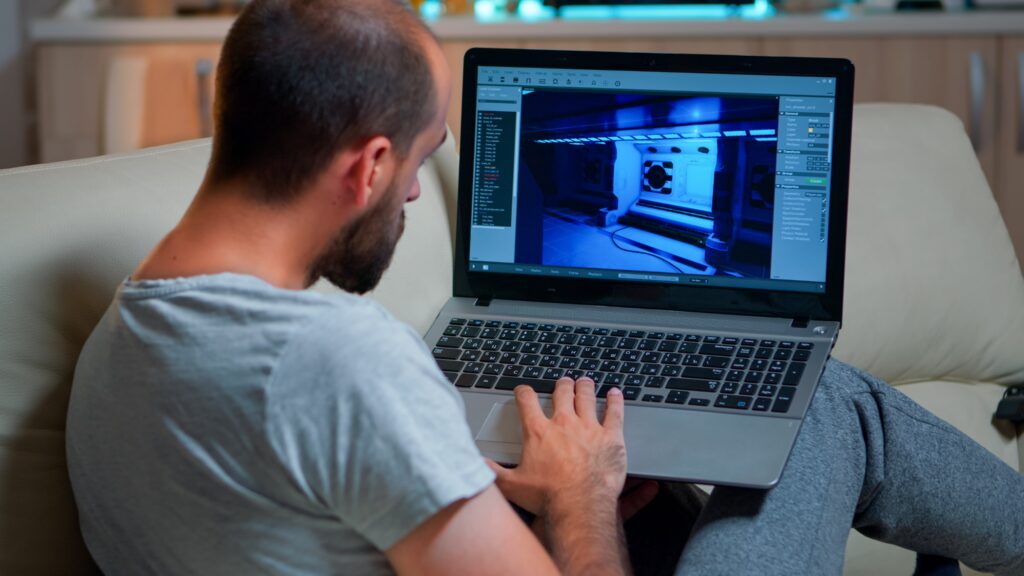Machine learning principles are revolutionizing various industries, and the field of animation is no exception. Animators are increasingly leveraging machine learning techniques to enhance their creativity, streamline production processes, and deliver more immersive experiences to audiences.
In this article, we will explore the key machine-learning principles that animators can integrate into their workflow to stay at the forefront of innovation in the dynamic world of animation.
Automated Inbetweening
One of the fundamental principles of animation is creating smooth transitions between keyframes. Machine learning algorithms can automate this process through a technique known as in-betweening.
By training models on vast datasets of motion sequences, animators can generate intermediate frames that seamlessly connect key poses, saving time and effort in the animation production pipeline.
Facial Animation Synthesis
Facial expressions play a crucial role in conveying emotions and bringing characters to life on screen. Machine learning algorithms can analyze facial movements and expressions from reference videos to synthesize realistic and expressive facial animations. This technology enables animators to achieve nuanced performances with greater precision and detail.
Motion Capture Enhancement
Motion capture technology has revolutionized animation by capturing real-world movements and translating them into digital characters. Machine learning can enhance this process by refining motion capture data, reducing noise, and improving the quality of animations. By leveraging machine learning algorithms, animators can achieve more lifelike movements and interactions in their projects.
Style Transfer for Visual Effects
Style transfer algorithms enable animators to apply artistic styles and visual effects to their animations automatically. By training models on diverse art styles and reference images, animators can quickly experiment with different aesthetics and create visually striking animations. Machine learning-powered style transfer tools offer a creative playground for animators to explore new design possibilities.
Character Animation Prediction
Predicting character movements and interactions is a challenging task in animation production. Machine learning models can learn patterns from existing animations and predict future poses and actions for characters.
By incorporating predictive algorithms into their workflow, animators can anticipate character behavior, enhance storytelling, and streamline the animation process.
Gesture Recognition for Interactive Animation
Interactive animations, such as games and immersive experiences, require real-time gesture recognition to respond to user input. Machine learning algorithms can analyze gestures and movements in real-time, enabling animators to create interactive animations that react to user interactions. This technology opens up new avenues for animators to engage audiences and deliver dynamic storytelling experiences.
Texture Synthesis and Generation
Creating textures for 3D models is a time-consuming task that often requires manual painting and detailing. Machine learning algorithms can generate realistic textures by learning from existing materials and patterns.
Animators can leverage texture synthesis models to expedite the texturing process, achieve consistent visual quality, and focus more on the creative aspects of animation production.
Storyboard Analysis and Optimization
Storyboarding is a critical phase in the animation process, where visual sequences are planned and refined. Machine learning can analyze storyboards, identify compositional elements, and suggest improvements to enhance visual storytelling.
By utilizing machine learning for storyboard analysis, animators can streamline the pre-production phase and ensure a cohesive narrative flow in their animations.
Dynamic Simulation and Physics-based Animation
Simulating physical interactions and dynamics is essential for creating realistic animations. Machine learning algorithms can optimize physics-based simulations, predict object behavior, and enhance the accuracy of dynamic animations.
Animators can use machine learning-powered simulations to achieve lifelike movements, fluid dynamics, and naturalistic physics in their projects.
Content Generation and Procedural Animation
Generating vast amounts of content for animations can be a daunting task for animators. Machine learning offers solutions for procedural content generation, enabling animators to create diverse assets, environments, and animations automatically.
By incorporating procedural animation techniques, animators can scale their projects efficiently, explore new design possibilities, and focus on creative storytelling.
Conclusion
Incorporating machine learning principles into animation workflows empowers animators to push the boundaries of creativity, efficiency, and storytelling in the industry. By embracing these cutting-edge technologies, animators can unlock new possibilities, streamline production processes, and deliver captivating experiences to audiences worldwide.
Key Takeaways:
- Automated in-betweening streamlines the animation process by generating intermediate frames.
- Facial animation synthesis enhances character expressions with realistic and detailed animations.
- Motion capture enhancement improves the quality of animations by refining motion capture data.
- Style transfer for visual effects allows animators to experiment with different aesthetics effortlessly.
- Character animation prediction aids in anticipating character movements and actions for smoother storytelling.
- Gesture recognition enables interactive animations that respond to user input in real time.
- Texture synthesis models expedite the texturing process and maintain visual quality.
- Storyboard analysis with machine learning enhances visual storytelling and narrative flow.
- Dynamic simulation and physics-based animation create realistic movements and interactions.
- Content generation tools automate the creation of diverse assets, environments, and animations.
Consider expanding your knowledge in animation and machine learning by enrolling in the NYU Animation Industry Essentials online course and certificate program offered by Yellowbrick. Explore the intersection of technology and creativity to elevate your animation projects and stay ahead in the animation industry.






